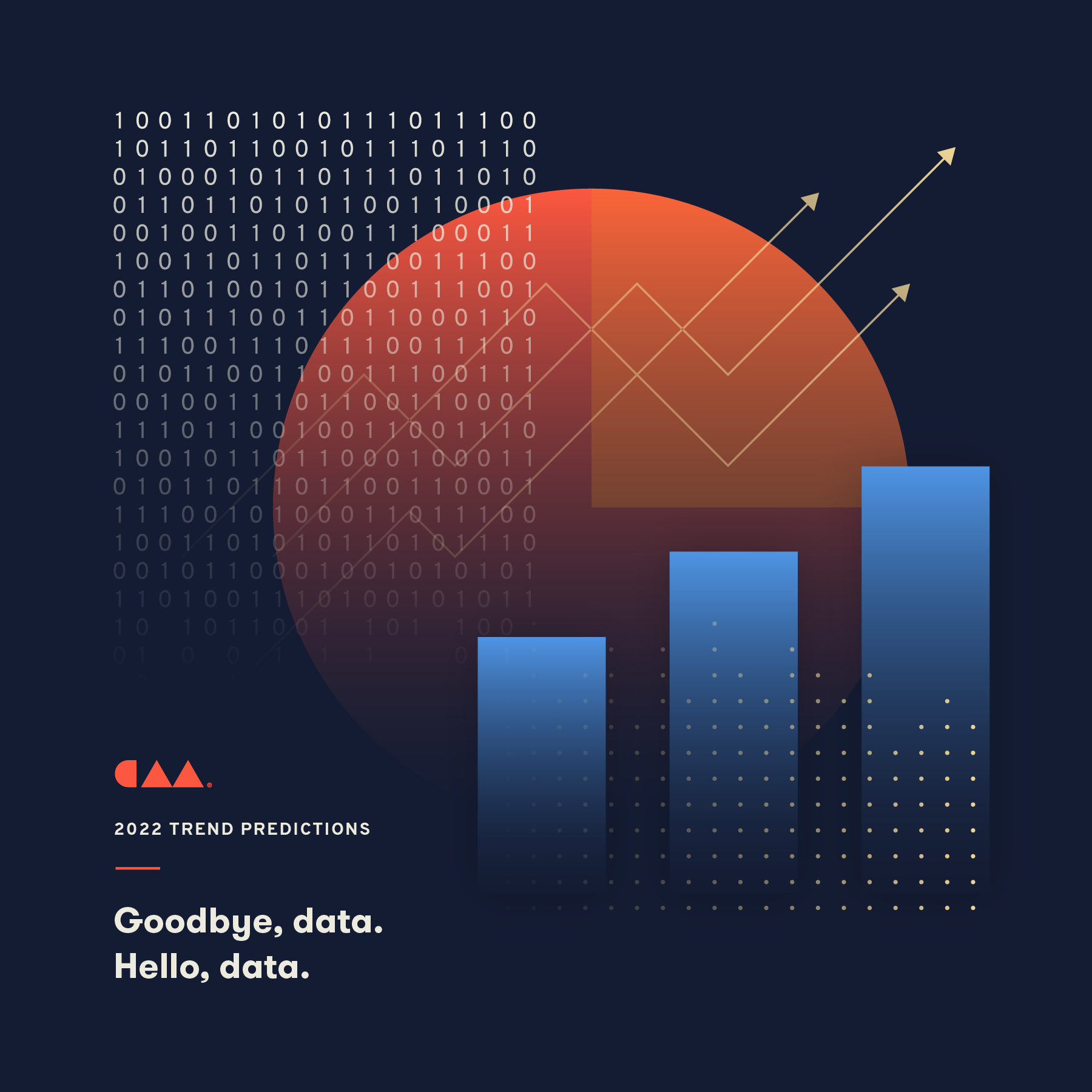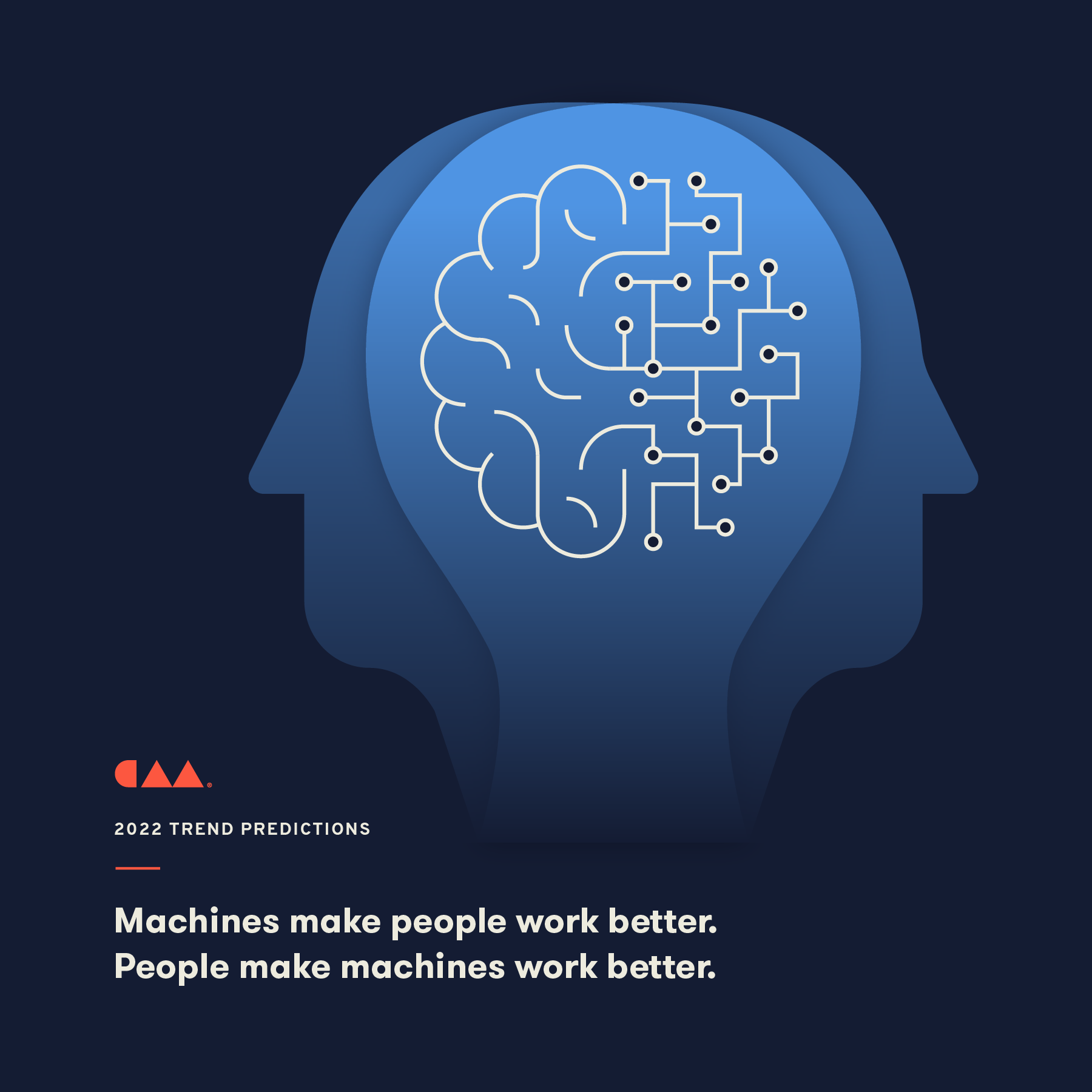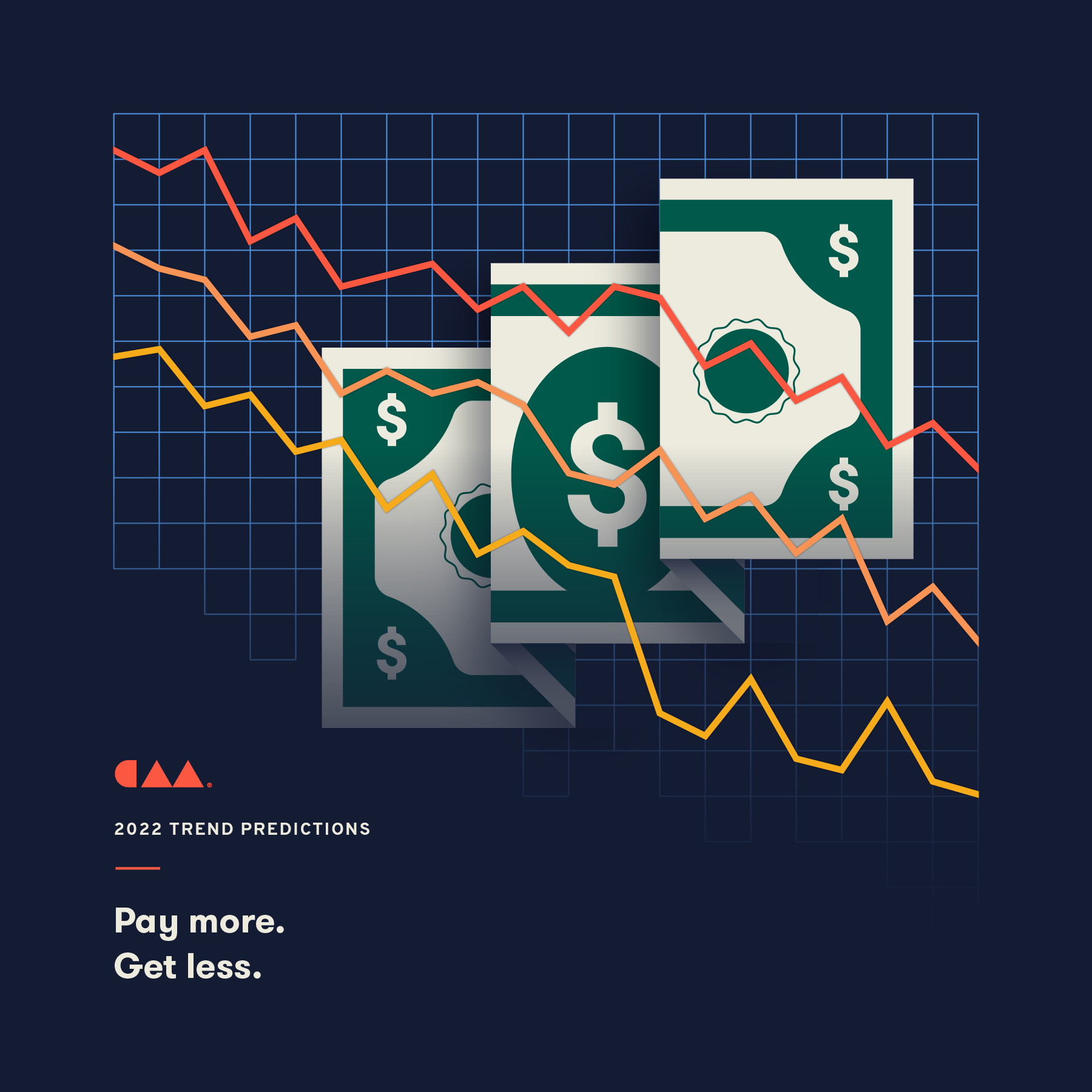2022 Digital Marketing Trend Predictions
Marketers hoping for respite from the volatility of 2020 got no relief in 2021. Rather than an easing of tension around our collective health and returning to a more predictable business climate, 2021 was infused with an overwhelming uncertainty that will spill over into 2022.
Consumers had plenty of time to pay attention to how their personal information was being collected and, in turn, demanded more transparency and protection. Platforms came under increased scrutiny and made it more challenging for marketers to adjust and tailor campaigns. But now, these platforms’ automated processes – combined with a marketer’s human touch – are actually proving more effective at improving campaign performance.
People got comfortable conducting their banking, grocery shopping, education, and healthcare online, and in doing so, demanded a seamless experience from service providers. Brands that made the grade did so by providing personalized experiences, friction-free transactions, supportive communication, and perks for loyal customers. B2B marketers finally took a cue from their B2C counterparts, fashioning personalized experiences for their customers, too.
Consumers are realizing the impact of the pandemic as they find fewer and less attractive deals at retail, as well as a shortage of in-demand products on store shelves. Marketers will need to get even more creative and scrappy as they vie for customer attention and loyalty.
Finally, we all spent a lot of time in front of screens over the past two years – for work and leisure – and the rise of Connected TV has relegated linear TV to the back burner. This sea change in the way marketers track and measure the effectiveness of campaigns and content offers exciting opportunities for brands willing to color outside the lines to find, woo and win new audiences.
It’s a lot to process. Marketers will need to be resilient as ever in 2022 – on the hunt for opportunities and poised to shift their strategies on a moment’s notice. In our opinion, there are five key areas where digital marketers should focus their attention and effort in the coming year. Read on to learn about the driving forces behind each trend, to understand the possible impact on your business, and to formulate solid success strategies to keep you ahead of the curveballs we’re so likely to be thrown in 2022.
- Goodbye, data. Hello, data.
- Machines make people work better. People make machines work better.
- Experience is everything. Everything is an experience.
- Pay more. Get less.
- CTV impressions are up. Linear TV ratings are down.
1. Goodbye, data. Hello, data.

In 2022, marketers will truly feel the impact of platform changes, regulation, and consumer privacy demands, on their targeting and measurement strategies. To keep up with their audiences, they will have to evolve their approach to third-party data targeting, first-party data collection, and digital media measurement. So, while data as we’ve known it will disappear, collecting data we can use will be more important than ever
Driving forces and impact
Apple’s move to limit targeting signals via iOS 14.5 & 15, combined with Google’s removal of search term data and planned cookie deprecation (2023), will make prospecting and audience targeting far less precise, and in some cases, downright impossible. First party data collection is critical for success, but convincing consumers to share will require a “give to get” philosophy from brands. Limitless tracking of a user’s movement is gone for good, and with it, the ability to connect the dots between online and offline brand engagements and conversions.
Success strategies for 2022
Marketers must cast a wider net and start testing new targeting capabilities that do not rely on cookies or app-to-app tracking, such as contextual alignment and second-party shopper data. Developing a quality value exchange – providing consumers with something they genuinely want or need that’s delivered on their terms – will enable marketers to collect the quality first-party data needed to fuel personalized content. To measure success, marketers must adopt a holistic view of media measurement and understand how the collective media mix is driving performance, versus measuring channel impact in silos.
2. Machines make people work better. People make machines work better.

As the industry focuses on data privacy, platforms are removing the ability for marketers to see granular data points to make manual optimizations. However, platform algorithms are now so advanced that this shift, with the right strategic human input, is actually helping performance and allowing marketers to fill in measurement gaps, accelerate testing, and find new audiences. So instead of trying to beat the machine, marketers will find the most success by working with them.
Driving forces and impact
There are three primary factors at play here – 1. Google’s removal of search term data and keyword targeting capabilities, 2. the rise of dynamic search ads (DSAs) and responsive search ads (RSAs) as the default ad type, 3. and a shift in Google’s organic algorithm to better understand natural language to improve user experience. The new “privacy-first” ecosystem requires this type of automation. But while platforms will strive to honor the consumers’ desire for data privacy, consumers will still expect their online experience to be tailored to their needs.
Success strategies for 2022
Use tools that provide a personalized, rich experience for each customer and a secure, scalable solution for marketers. Keep an eye on algorithm updates and their impact, adjust how you are collecting and segmenting data accordingly, and use a variety of data sources. Lean into the machines. Automation will allow marketers to fill in measurement gaps, accelerate testing, and find new audiences.
3. Experience is everything. Everything is an experience.

Today’s customers have high expectations. And that’s just as true for B2B as it is for B2C. Every brand needs to get all the pieces right to create an easy, seamless experience for their customers, otherwise it’s all too easy for them to swipe left and move on to another brand. This is made even more difficult by all the external factors impacting this, like COVID, labor shortages, and other issues creating disappointing customer experiences in the marketplace. To capture business and create loyalty, brands need to find new ways to assure customers and keep them engaged throughout the customer journey.
Driving forces and impact
Whether you’re marketing to scientists, soccer moms, or someone searching for grocery delivery, the ability to provide a seamless, personalized experience is table stakes. One misstep, and you run the risk of losing that customer forever. Plus, Google’s implementation of Core Web Vitals made user experience an official ranking factor. So it’s more important than ever for content, SEO, and customer experience to work in harmony.
Success strategies for 2022
That scientist may also be the soccer mom and the person looking to save time with a grocery delivery service. Yet each experience must be unique, with that specific user’s needs in mind. Your visibility in search results, the stories you tell with your content, the speed and reliability of your website, the availability of your customer service team – all factor into consumer satisfaction and retention. Replicating that engaging, friction-free buying experience wherever customers encounter your brand will be key in 2022.
4. Pay more. Get less.
Consumers and marketers alike should expect to pay more for less in 2022. Supply chain issues, labor shortages, and inflation will hit consumer spending and product availability. On top of that, data loss and increased competition are driving up media costs and impacting efficiency. For marketers it’s a one two punch: pay more per customer acquisition and get less loyalty in return. To succeed, brands will have to take an aggressive approach to customer acquisition and reframe their overall expectations to be in line with the changing economy and media landscape.
Driving forces and impact
The pandemic’s impact will be felt well into the future by consumers and marketers alike. Consumers with less disposable income and ongoing data privacy concerns will continue to be choosier about where they do business and with whom. Marketers will have less data on which to base campaign optimizations and will have to spend more and do more to reach a larger, likely less-engaged audience for their campaigns.
Success strategies for 2022
Take a deep breath and budget accordingly. Brands with growth goals will have to substantially increase their marketing budgets YoY. Brands with flat budgets should adjust their expectations as increased competition and decreased loyalty require more resources to overcome. Creating content that helps convince consumers your brand is the right choice will be money well-spent. Setting expectations around product availability, hours of operation, and price increases with clear, timely communication will prevent customer disappointment and ill will.
5. CTV impressions are up. Linear TV ratings are down.
Reaching audiences via traditional linear TV is becoming harder to do, more expensive and not as measurable — especially with Nielsen’s loss of MRC accreditation. Meanwhile, in addition to being more targetable and measurable, CTV viewership has surpassed linear, and in turn has more inventory. That means networks are being forced to move away from upfronts and the traditional linear rating system and embracing impressions. So as linear TV’s ratings and reach crumble, CTV’s impressions are taking over their place in the media landscape.
Driving forces and Impact
In 2022, CTV will continue to gain traction due to increased media consumption, combined with targeting and measurement capabilities. There will also be limited linear inventory available in 2022 due to the Olympics and midterm elections.
Success strategies for 2022
Evolve your TV approach to better align with media consumption habits of your audience. And don’t wait to replace a ratings-first approach with CTV’s impression-driven planning and measurement – the time has officially come to make the change.
Buckle up!
Marketers who experienced the ups and downs of 2021 are already battle-worn and ready for the year ahead. Rather than approaching 2022 with dread, recognize how the past year made you stronger, smarter, more creative, and more resilient as a marketer (and as a human, too.) Bring that human element to life in your content and campaigns. Go all in to connect with your customers on a personal level, wherever they encounter your brand. Acknowledge the struggles we’ve all endured over the past two years and recommit to providing the best possible experience to people who want to do business with you. Use the strategies outlined here to help you focus on what matters most, and to flourish in what promises to be an unpredictable, fast-moving exciting year in marketing.





